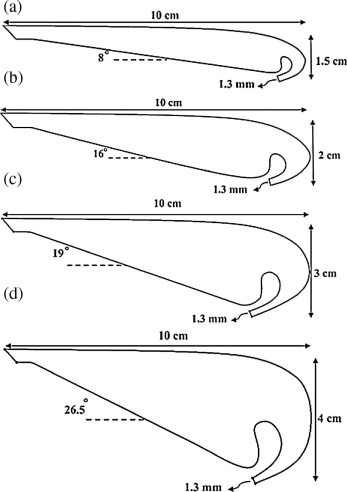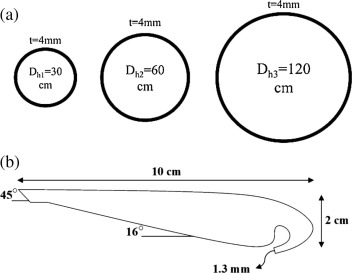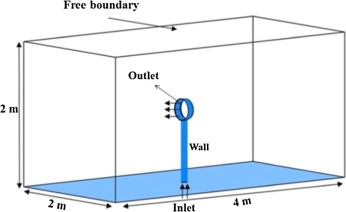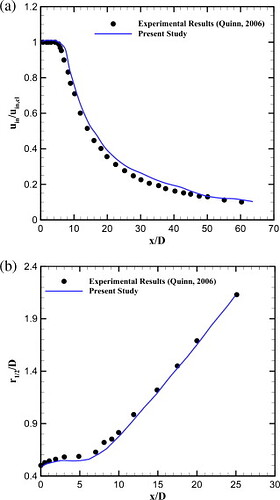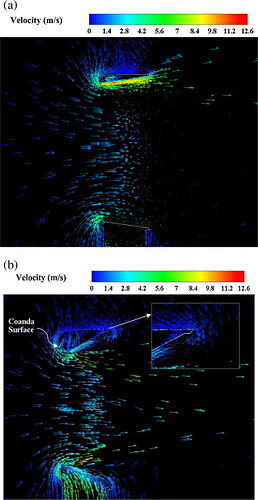Description:
Overview
Hearing the term “fans” would guide most people to think about fans with blades: be it in an axial or in a radial configuration. A new configuration with a very comparable performance in multiplying airflow has been developed and commercialized in recent years. Theses fans are known as bladeless fans or air-multipliers. Besides it’s conspicuous advantage of saving material cost for blades and their maintenance, these blades are also highly energy efficient.
Despite being patented in 2009, the fans’ aerodynamic performance has not been studied in depth numerically or experimentally. This leaves room for significant performance enhancements and this is where Computational Fluid Dynamics (CFD) can be implemented. This study intends to do just that and verify the results against a previously conducted study [1].
Input Data
-
The geometry can be created, based on the following:
More detailed parameters for modelling the fan can be found in [1]. Our recommendation would be to create the geometry on Onshape. The geometry can be directly imported from Onshape to the SimScale platform. -
The details about setting up the validation case can be found in [1]. The CFD analysis of transient flow around the two bridges is the central topic of this validation case.
-
The CFD results are to be validated against measured flow fields. It must be noted here that there is no sufficient and detailed experimental data for the Bladeless fans in existing literature for validation. Now, Since the exit section of the Bladeless fan acts as a jet flow, the physics of both phenomena can be accounted about the same. Hence, experimental data of a circular jet [2] were used to validate the Bladeless fan simulation in this study [1].
More experimental data to be validated against can be found in [1].
Purpose
This project is intended towards validating the flow-fields against experiments. Such a validation project enables the user to enhance their knowledge in parametric design and performance enhancement in a novel air-multiplier and extend it towards applying CFD best practices.
Key Words
Validation, bladeless fan, parametric design, performance enhancement, HVAC, air-multiplier, verification, OpenFOAM.
Literature & Sources
- [1] Numerical investigation of geometric parameter effects on the aerodynamic performance of a Bladeless fan - ScienceDirect
- [2] Experimental investigations on the wall pressure measurement on the blade of axial flow fans - ScienceDirect
Status
Not yet started.
